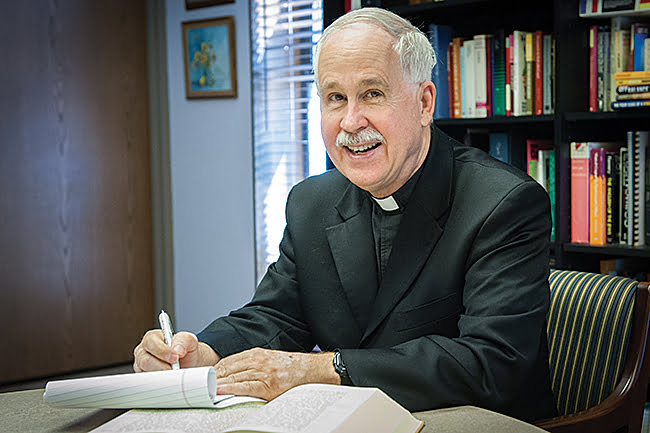
by Father Mike Stubbs
Do you drive a hybrid, out of concern for the environment? Or, do you tool around in a Jeep that can handle tough terrain?
Your ride says something about you — about how you view the world and how you fit into it.
That was also true centuries ago, at the time of Jesus. In the reading this Sunday for the blessing of the palms, we notice Jesus’ mode of transportation (Mt 21:1-11).
Huge crowds of pilgrims are entering the city of Jerusalem to celebrate the feast of Passover. One scholar estimates the number of pilgrims at about 125,000. (Found in “Jerusalem in the Time of Jesus,” by Joachim Jeremias.)
In the midst of that multitude of pilgrims, Jesus also enters the city. But, unlike them, he is not walking. Instead, he has a ride obtained by his disciples according to his instructions to them:
“Go into the village opposite you, and immediately you will find an ass tethered, and a colt with her. Untie them and bring them here to me.”
The Gospel further comments upon this mode of transportation as fulfilling the words of the prophet: “Behold your king comes to you, meek and riding on an ass, and on a colt, the foal of a beast of burden” (Zec 9:9).
The Messiah is not riding in on a warhorse, ready to do battle. Neither is he driving a chariot. The choice of an ass reflects his peaceful nature and intentions.
The verse that follows in Zechariah, which is not quoted in Matthew’s Gospel, clarifies this: “He shall banish the chariot from Ephraim, and the horse from Jerusalem; the warrior’s bow shall be banished, and he shall proclaim peace to the nations.”
Most likely, when Zechariah mentions “an ass” and “a colt, the foal of an ass,” he is referring to a single animal, and not to two separate animals.
The second phrase simply further describes the same animal. That is how the Gospels of Mark, Luke and John understand it. Matthew’s Gospel is alone in interpreting the prophecy as meaning two separate animals.
This poses a dilemma: How could Jesus ride two animals at the same time? Some have even pictured him as astride the animals, with one foot on each. Not very likely.
In any case, Jesus enters the city of Jerusalem in peace, in order to bring us salvation. The enthusiastic crowds that welcome him will soon abandon him.
This moment of glory will soon fade away, only to yield to the lasting glory of the Resurrection.

